Contents:
A 1984 Lincoln cent is a one-cent coin from the U.S. that features Abraham Lincoln on the obverse and the Lincoln Memorial on the reverse. This coin is of particular interest to collectors for several reasons.
How much is a 1984 penny worth? In essence, most of them hold little more than face value. But if you find a valuable 1984 double ear penny, you might be holding a coin worth hundreds. But how can you identify coins fast and easily? Coin ID Scanner will help you!
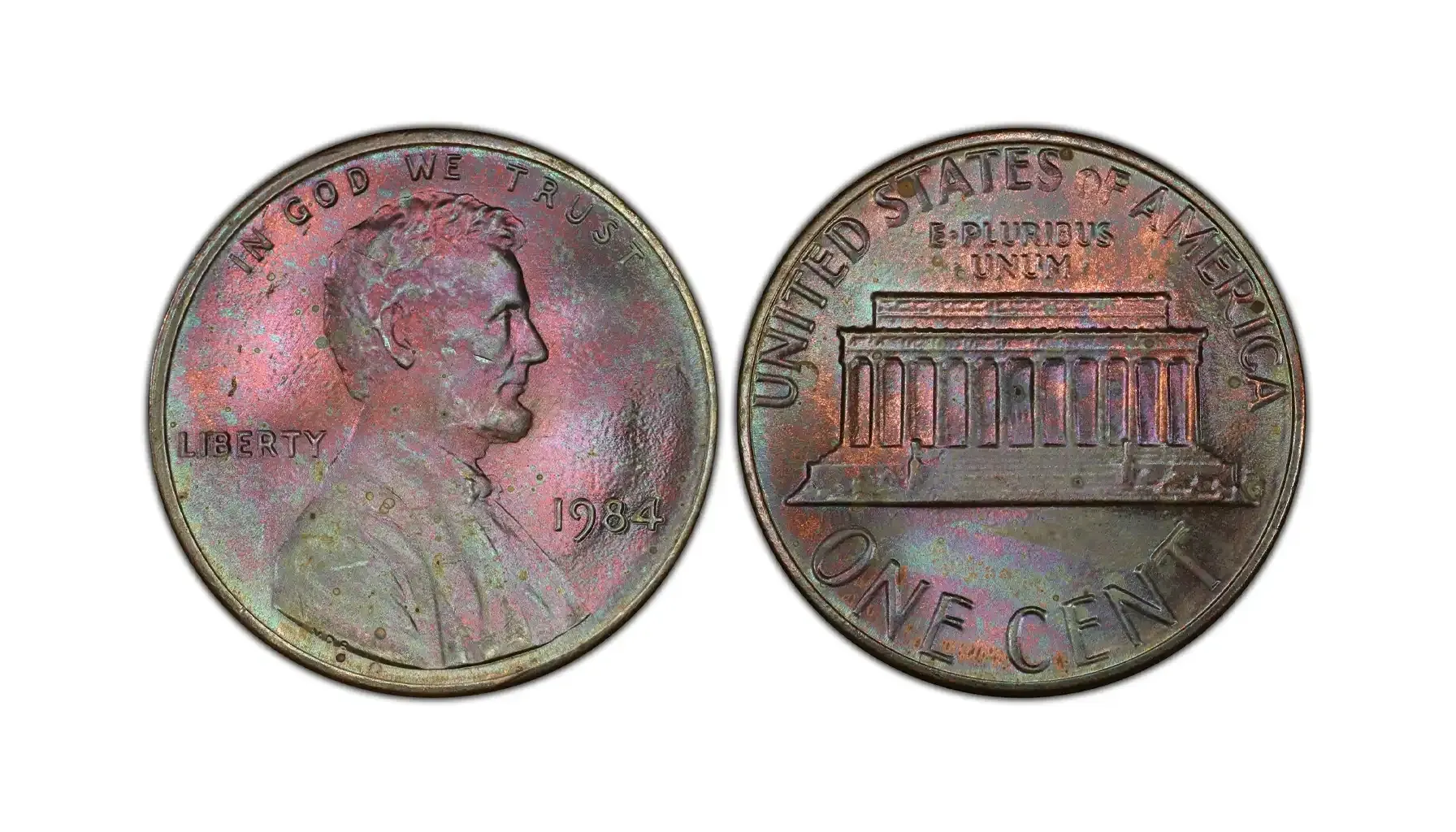
Feature | Specification |
Obverse Design | Abraham Lincoln bust |
Reverse Design | Lincoln Memorial |
Designer (Obv.) | Victor David Brenner (1909) |
Designer (Rev.) | Frank Gasparro (1959) |
Year of Issue | 1984 |
Mint Marks | No mint mark (Philadelphia), D (Denver), S (San Francisco – proof only) |
Composition | 97.5% Zinc, 2.5% Copper (copper-plated zinc) |
1984 Penny Weight | 2.5 grams |
Diameter | 19.05 mm (0.75 inches) |
Thickness | 1.52 mm |
Edge | Plain |
Total Mintage | ~13.7 billion (P + D), ~3 million proof (S) |
Circulation Value | $0.01 – $0.25 (typical circulated) |
Collector Value | Up to $3,000+ for rare 1984 DDO penny examples or high-grade proofs |
Proof Coin | Yes – 1984-S (San Francisco Mint) |
History
The 1984 Lincoln Memorial Cent is part of the long-running Lincoln cent series, first introduced in 1909 to commemorate the 100th anniversary of Abraham Lincoln’s birth. Here's how the 1984 issue fits into the broader historical context:
In 1909, the Lincoln cent debuted as the first U.S. coin to feature a real person—President Abraham Lincoln—designed by Victor D. Brenner.
In 1959, to mark Lincoln’s 150th birthday and the 50th anniversary of the coin, the reverse design changed from wheat ears to the Lincoln Memorial, i.e. 1959 penny, designed by Frank Gasparro.
In 1982, due to rising copper prices, the U.S. Mint changed the composition of the cent from 95% copper to copper-plated zinc (97.5% zinc, 2.5% copper). There’s NO 1984 silver penny.
The 1984 penny was the second full year of this new lightweight zinc-core format.
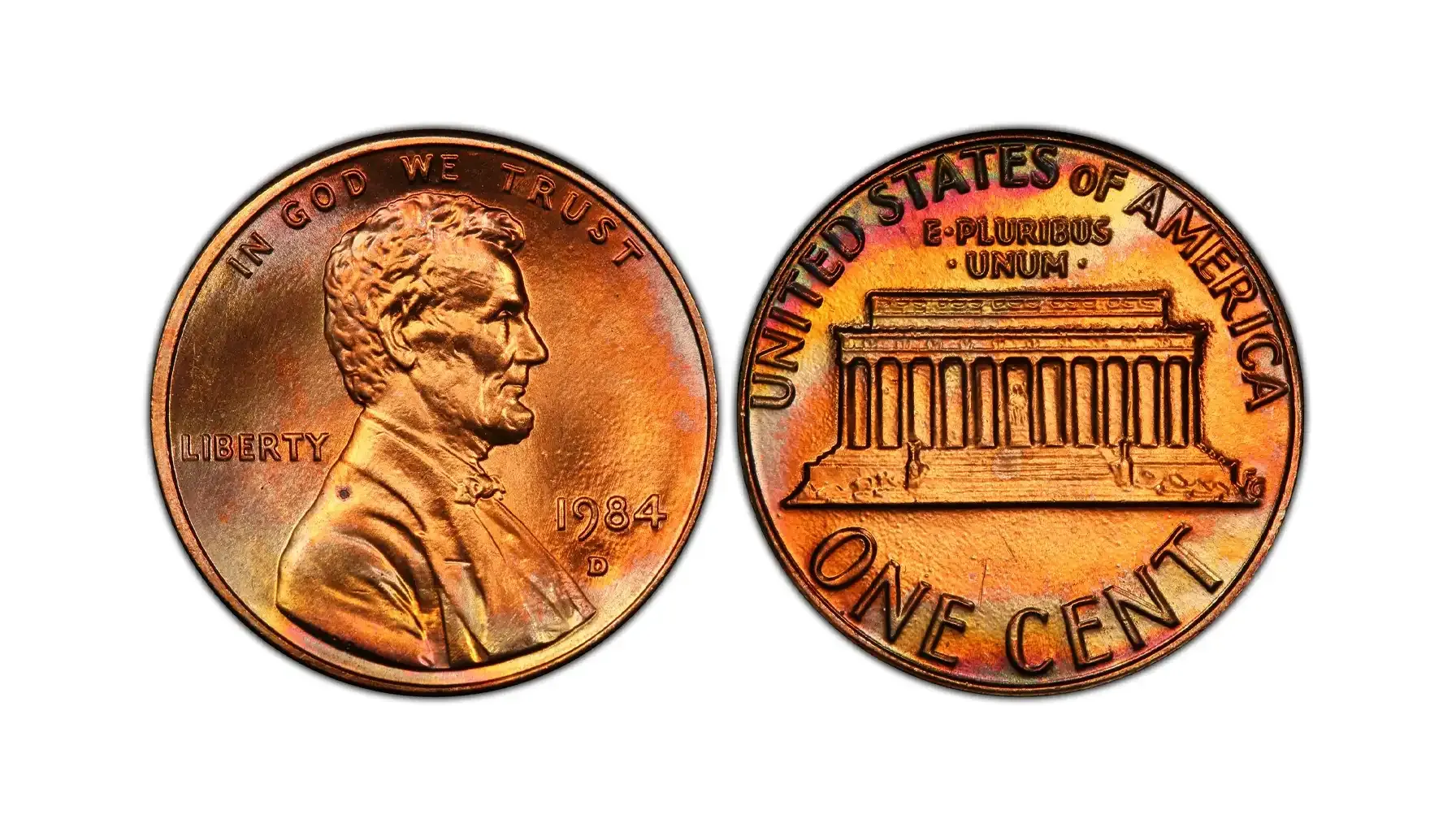
1984: High Mintage, Low Cost… But Not Always
The U.S. produced over 13.7 billion pennies in 1984 across Philadelphia and Denver mints.
It was a routine circulation coin, but one variety made it highly collectible: the Doubled Die Obverse (DDO) known as the 1984 Double Ear Lincoln penny due to visible doubling on Lincoln’s earlobe.
Cultural and Economic Context
In the early 1980s, the U.S. was recovering from recession. Inflation was high, so preserving copper became fiscally important—making the zinc transition a cost-cutting measure.
As coin collecting gained popularity during this era, small minting 1984 penny errors and variations—like the 1984 DDO—became headline-worthy discoveries in hobbyist circles.
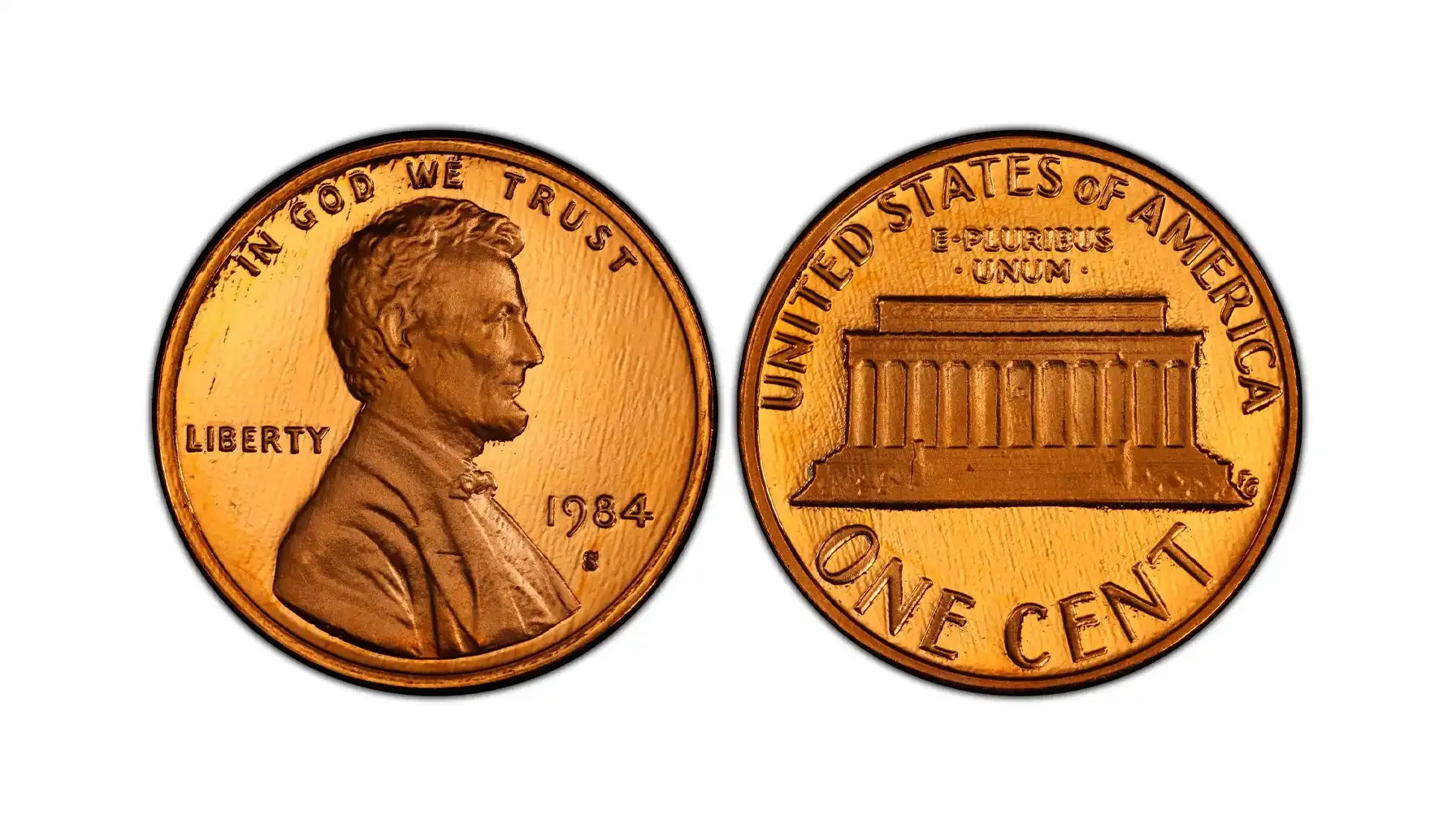
1984 One Cent Coin Value Table
Variety | Condition | Price |
1984 penny value no mint mark | Circulated (G–XF) | $0.01 – $0.10 |
Uncirculated (MS60–MS65) | $0.20 – $1.50 | |
High Grade (MS66–MS68 RD) | $5 – $50+ | |
Doubled Die Obverse (DDO “Double Ear”) | $100 – $300 (MS63–MS64 RD) $500 – $3,000+ (MS65–MS67 RD) | |
1984 D penny value | Circulated (G–XF) | $0.01 – $0.10 |
Uncirculated (MS60–MS65) | $0.20 – $1.00 | |
High Grade (MS66–MS68 RD) | $4 – $30+ | |
DDO / RPM (less known) | $25 – $100+ depending on grade | |
1984 S penny value | PR65 – PR68 | $1 – $5 |
PR69 Deep Cameo (DCAM) | $10 – $30 | |
PR70 Deep Cameo (perfect grade) | $100 – $150+ |
Colors and Mint Marks
BN, RB, RD
These color designations are used by grading services (like PCGS, NGC) to describe the surface tone of copper-based coins, affecting value very much.
Code | Name | Description | Value Impact |
BN | Brown | Darker patina from oxidation; occurs with age. Less original copper luster. | Lowest of the three |
RB | Red-Brown | About 15–85% original mint red color remaining. | Mid-range value |
RD | Over 85% red mint luster, bright like when struck. | Highest premium |
Only uncirculated coins (MS60+) can receive a color designation. Circulated coins are simply graded by wear.
Mint Marks
The mint mark indicates where the coin was produced. For 1984 Lincoln cents, there are three varieties:
Mint Mark | Mint Location | Appearance | Mintage | Details |
1984 Penny No Mint Mark | Philadelphia | No mint mark below the date | ~8.15 billion | Most common, includes the famous DDO 1984 penny Double Ear variety |
1984 D | Denver | "D" below the year | ~5.57 billion | Large mintage, some minor errors like RPM |
1984 S | San Francisco (Proof) | "S" below the year | ~3 million | Proof only, sharp mirror-like surfaces |
Mint mark location: All appear just under the year “1984” on the obverse (Lincoln’s shoulder side).
1984 Penny Error List with Pictures
1. Doubled Die Obverse (DDO) – “Double Ear”
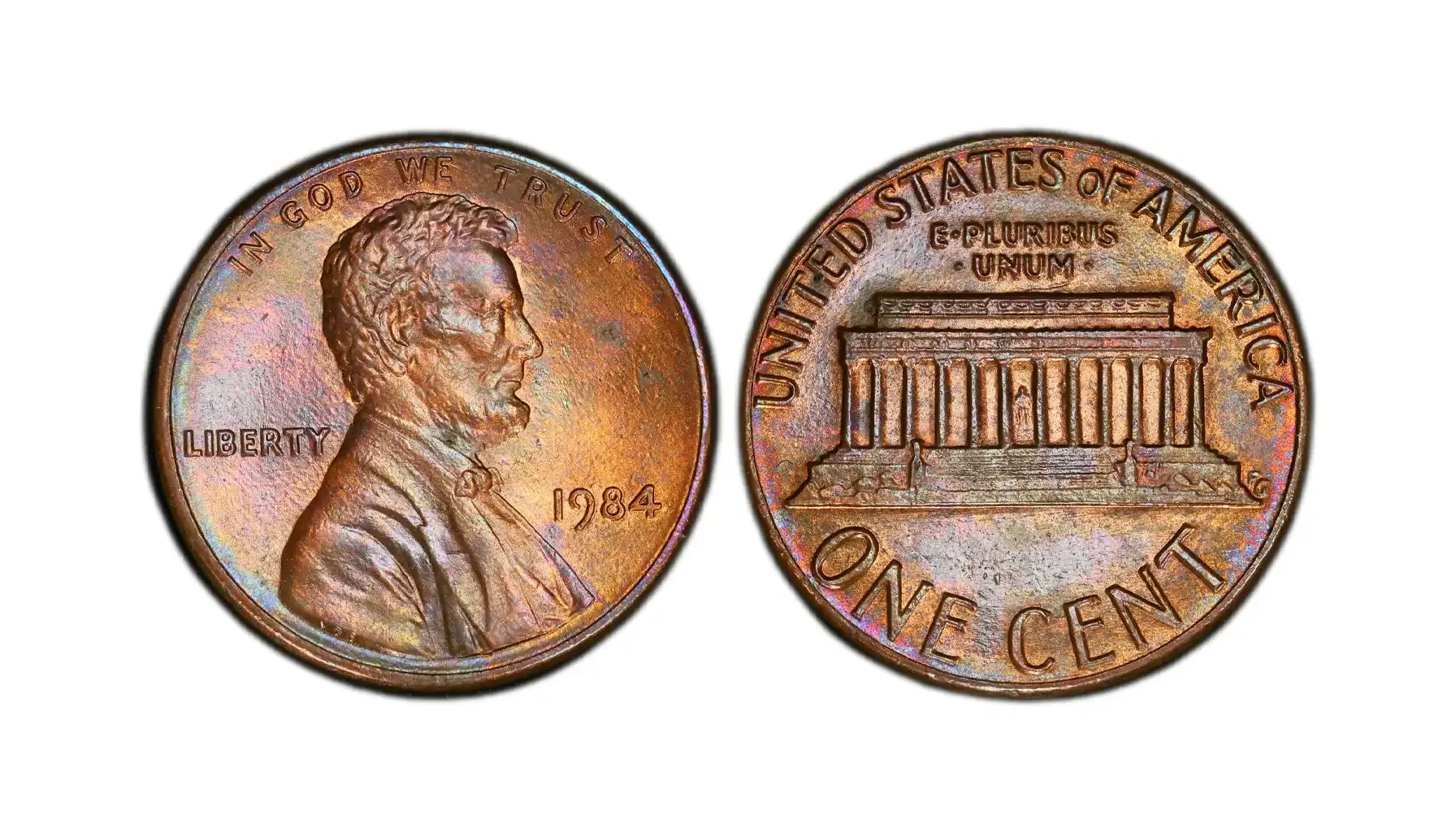
It’s a 1984 double die penny with a striking error where parts of Lincoln’s ear, beard, and bow tie are visibly doubled due to a misalignment during die creation.
Strong doubling on Lincoln’s ear lobe—looks like a “second ear.”
Also check for faint doubling on the beard and bow tie.
Most commonly found on 1984 penny with no mint mark coins.
1984 Double Ear penny value:
Circulated: $50–$150
MS65 RD+: $500–$3,000+
2. Off-Center Strike
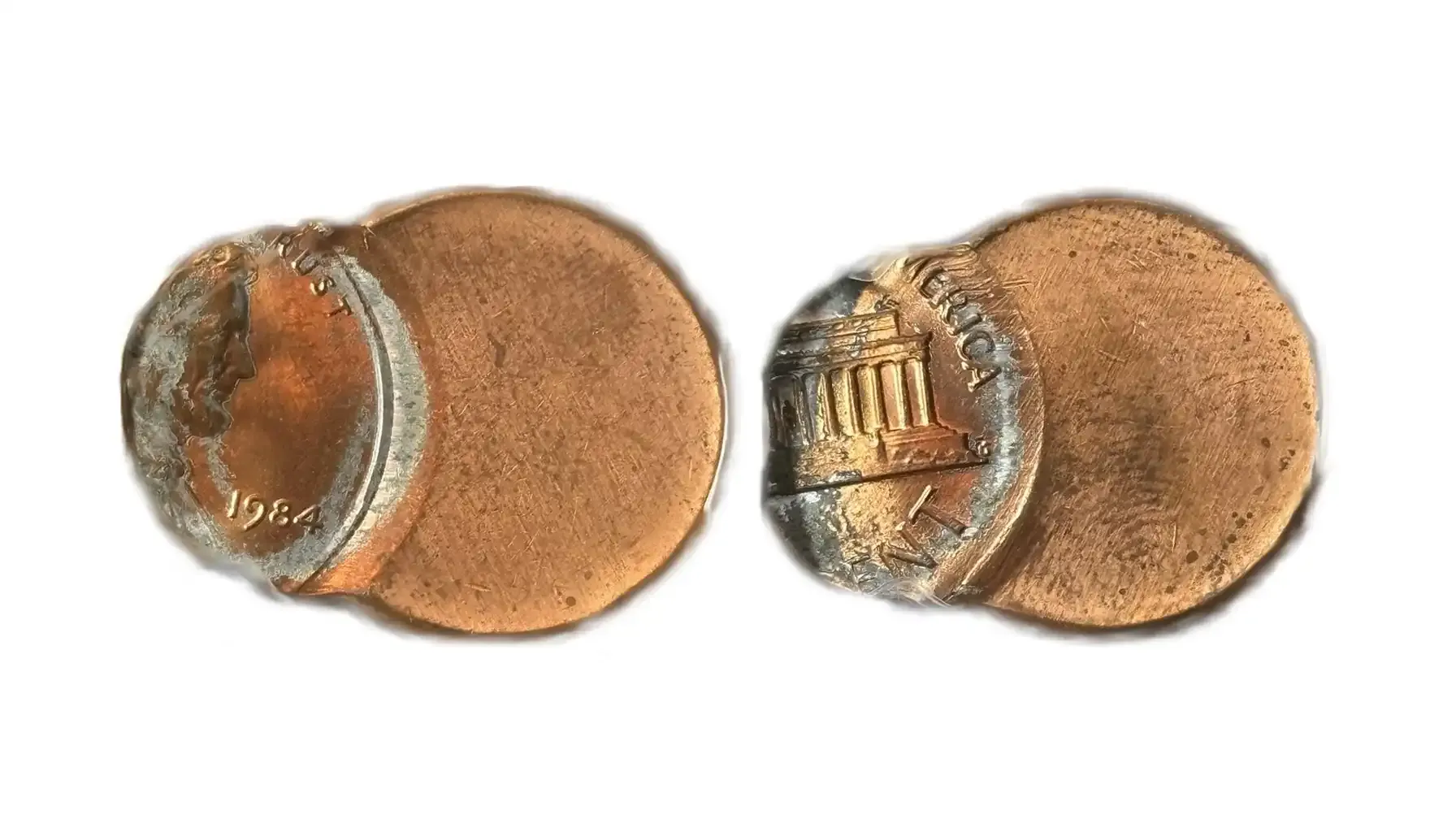
The coin is misaligned when struck, causing part of the design to appear off the edge.
Portion of the coin is blank; Lincoln’s portrait is partially missing.
Errors range from 5% to 90% off-center.
Full date and mint mark visible = more valuable.
Rare 1984 penny error value:
Minor (5–10%): $5–$20
Major (50%+): $50–$200+ depending on centering and condition
3. Clipped Planchet
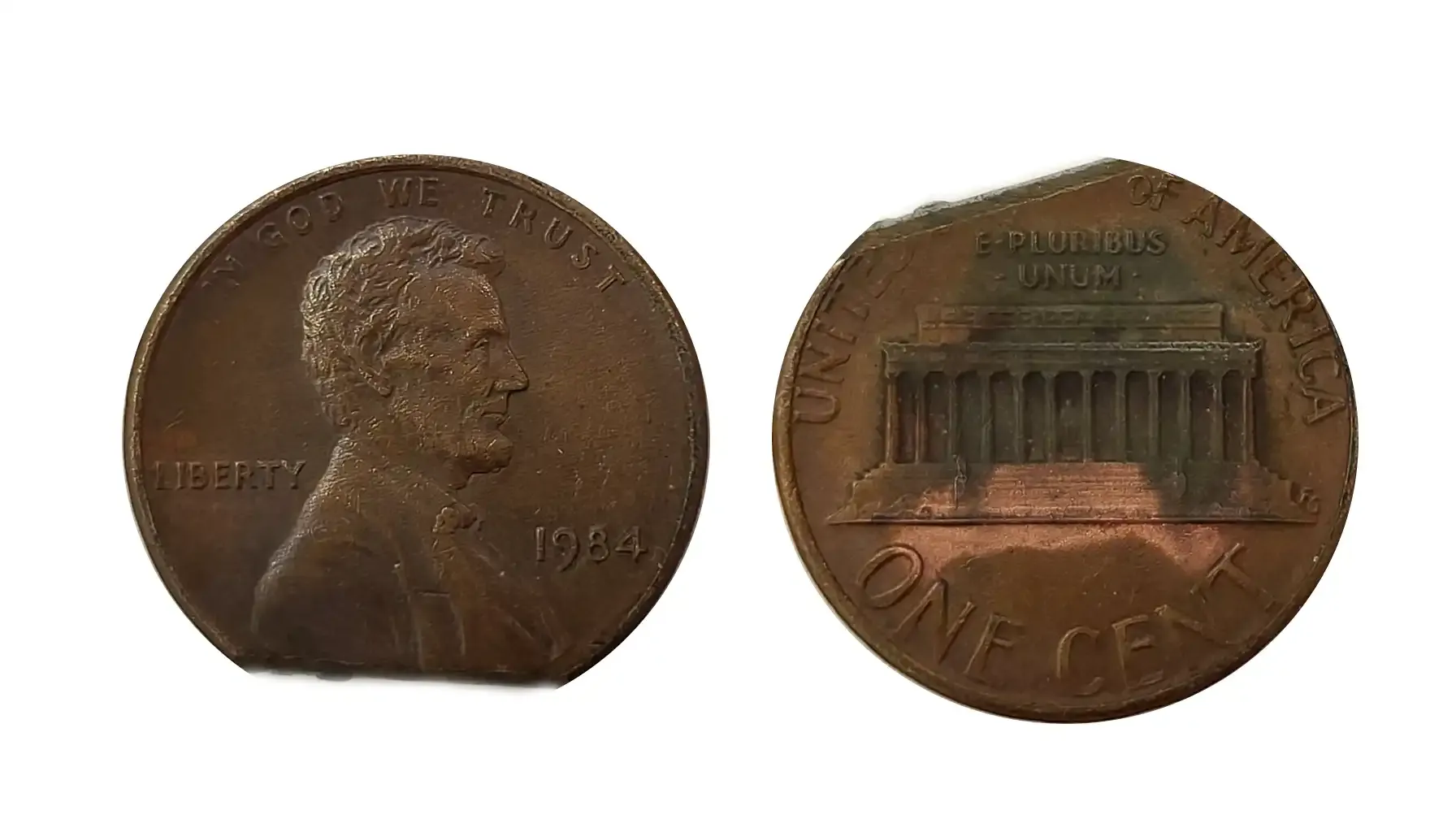
A portion of the coin is physically “clipped” off due to a flaw in the blank cutting process.
Crescent-shaped missing section along the edge.
Must be clean and not post-mint damage (look for disturbed rim flow or metal distortion).
1984 error penny value: $10–$50 depending on size and visibility of the clip.
4. Die Breaks / Cuds
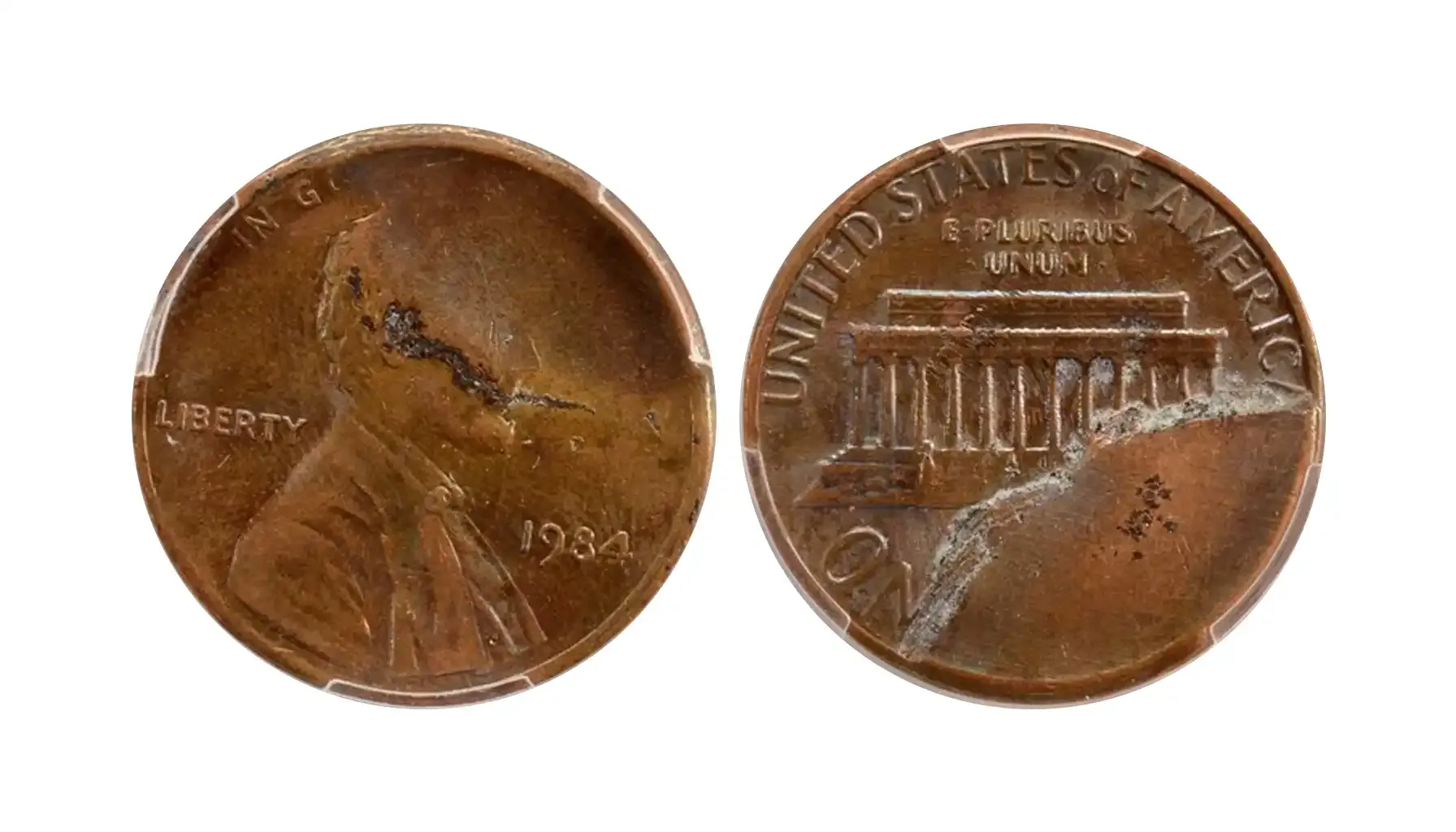
A piece of the die breaks off, causing raised blobs or missing parts of the design.
Look for raised, irregular “blobs” (usually near the rim or devices).
A "cud" is a major break near the coin's edge, often replacing letters with a blob.
Value:
Minor die chips: $1–$10
Large cuds: $20–$100+
5. Repunched Mint Mark (RPM) – 1984-D
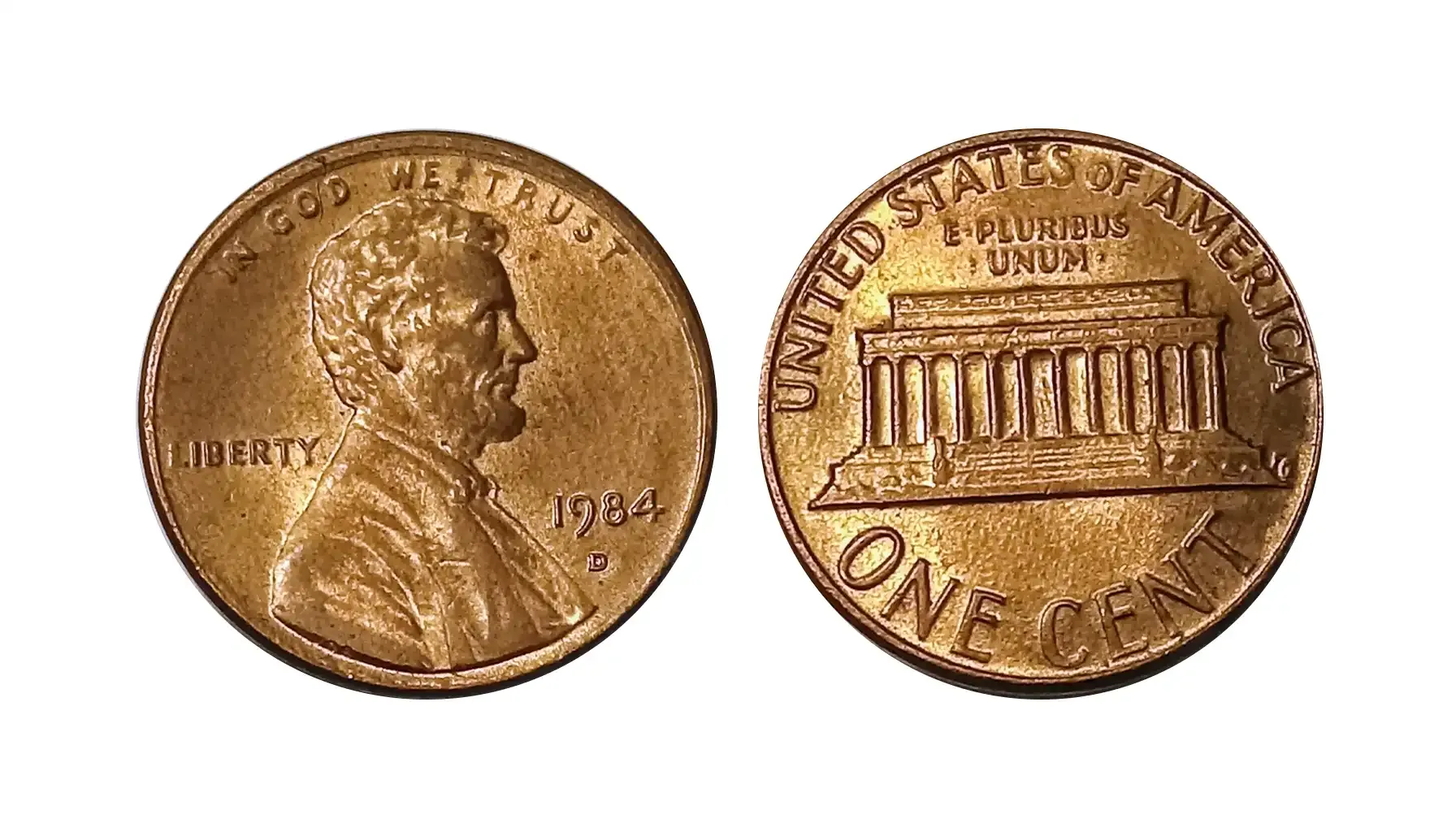
Here’s one from the 1984 D penny error list with pictures. The Denver mint mark (D) was hand-punched and stamped twice, misaligned slightly.
Look for an extra “D” shadow above, below, or beside the main D.
Requires magnification (10x or higher).
Value: $10–$50 depending on strength of doubling and grade, although it’s not a rare 1984 D penny error.
6. Broadstrike Error
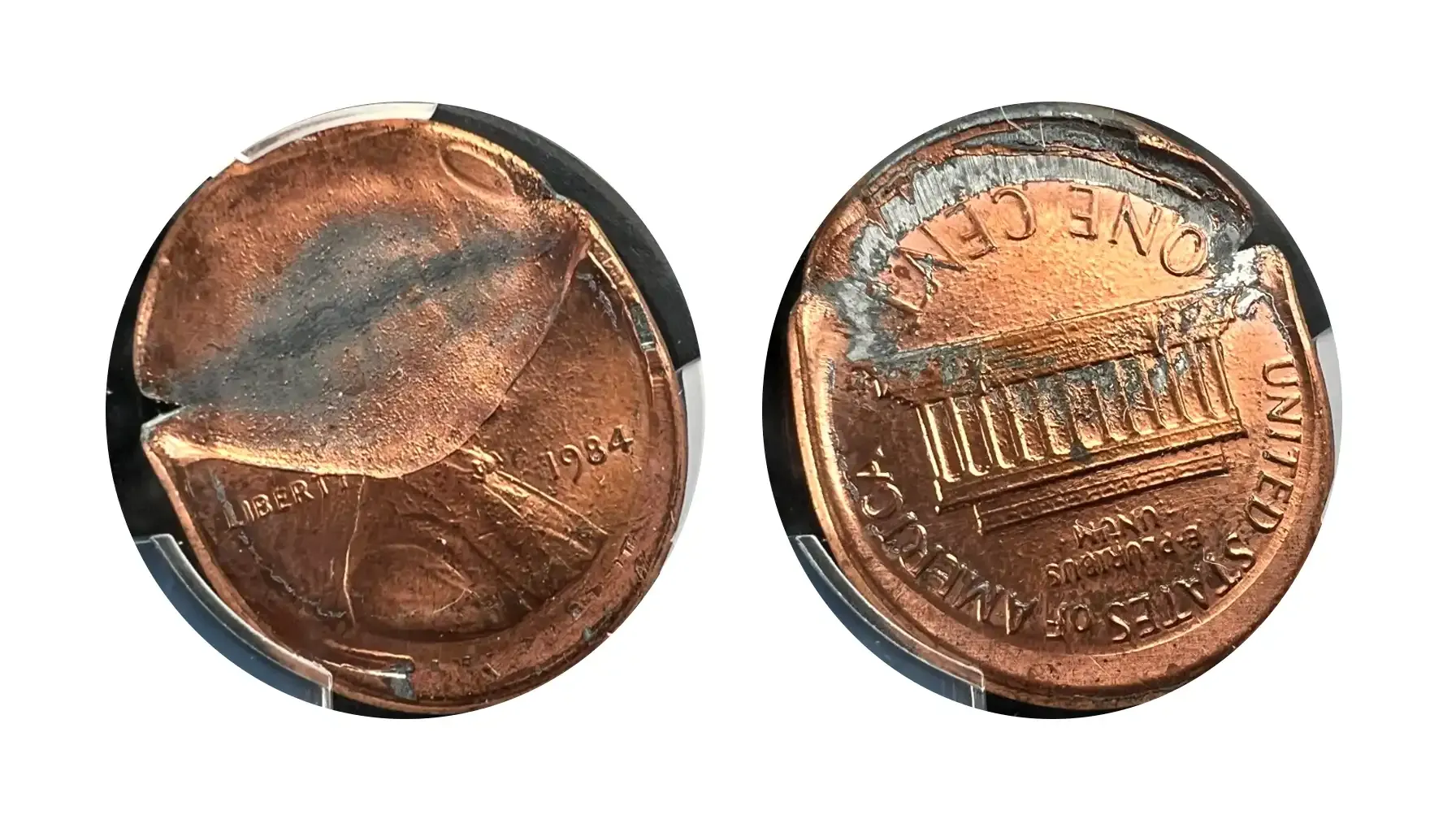
The coin is struck without the retaining collar, making it flatter and wider than normal.
No defined rim; larger diameter than standard 19.05 mm.
Entire design looks "mushy" or spread.
1984 penny rim error value: $20–$80.
Composition Details
Unlike earlier cents made from solid bronze (95% copper), the 1984 issue was struck on a copper-plated zinc core. This shift began in 1982 as a response to the soaring cost of copper. It was no longer economically viable to mint pennies with high copper content.
The core of the 1984 penny is zinc—comprising 97.5% of the coin—while the outer layer is just 2.5% copper. But what makes this composition particularly interesting is that the copper isn't alloyed into the metal; it's electroplated onto the zinc core.
The plating is only a few microns thick—thinner than a human hair. As a result, even light scratches can expose the silvery zinc underneath.
Because zinc is reactive, especially when exposed to moisture, coins of this era are vulnerable to corrosion. A phenomenon known as “zinc rot” occurs when moisture breaches the copper plating. This leads to unsightly bubbles or surface blisters. These aren’t true mint errors, but environmental damage. However, large blisters can sometimes be mistaken for collectible varieties.
In scientific demonstrations, placing a zinc-core penny in vinegar will gradually dissolve the copper layer, revealing the shiny inner core and producing small amounts of hydrogen gas—useful in chemistry lessons, though dangerous in poorly ventilated spaces.
Lastly, coin collectors often use the coin’s weight to identify planchet composition. A copper-plated zinc 1984 penny should weigh 2.5 grams. If it weighs significantly more—around 3.11 grams—it might be a rare off-metal error struck on a leftover copper planchet, which is considered extremely collectible.
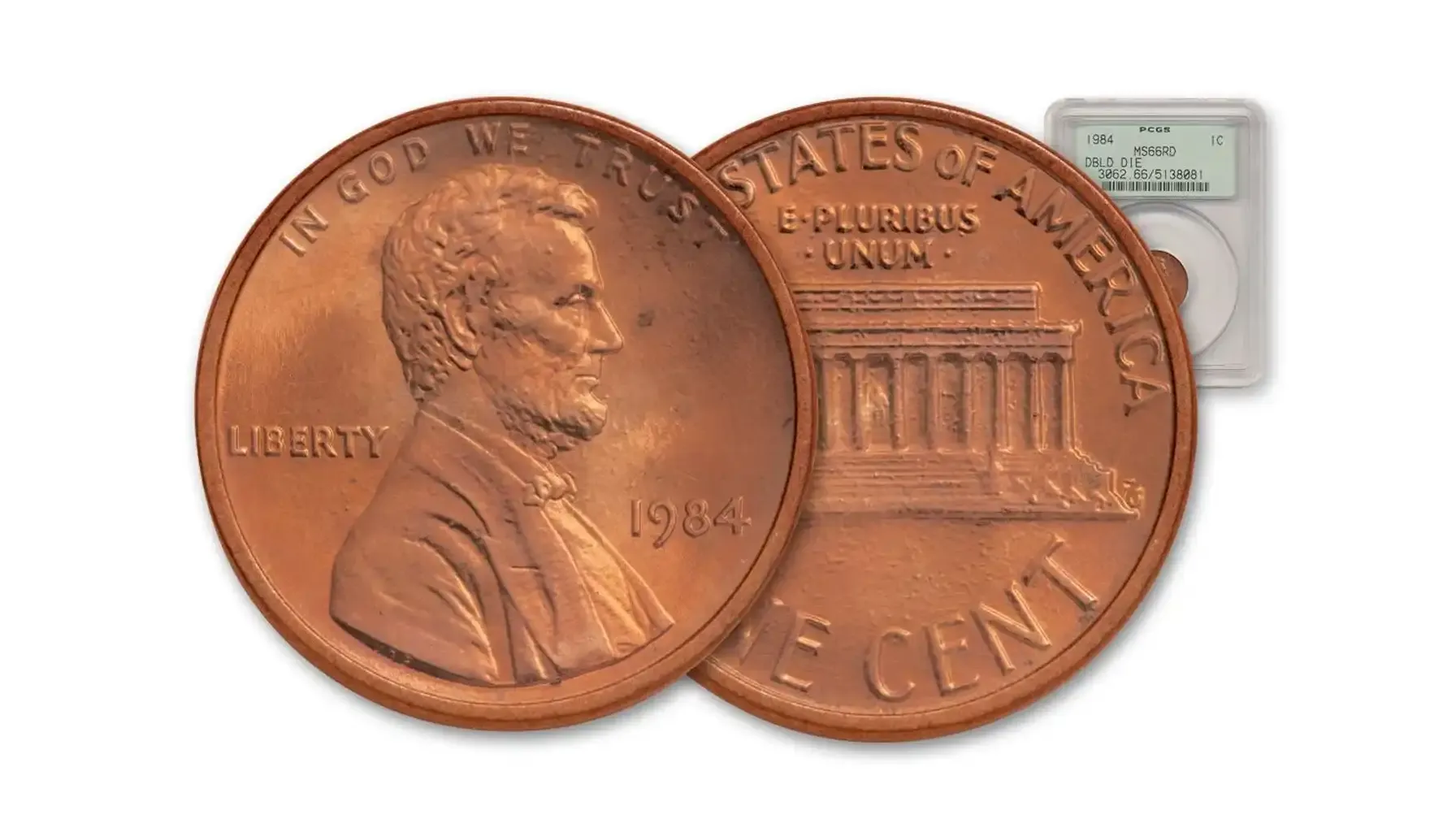
FAQs
Can a 1984 Lincoln penny be magnetic?
No, it cannot. The 1984 penny is composed of non-magnetic metals—zinc and copper. If your coin sticks to a magnet, it's either a novelty item, counterfeit, or altered in some way.
Is the 1984 penny still legal tender?
Yes, all U.S. one-cent coins, including the 1984 no mint penny (and other mints as well), remain legal tender regardless of age or composition. However, due to low face value and high production, they're rarely used in large transactions.
Are there 1984 pennies made of solid copper by mistake?
While extremely rare, transitional errors are possible. Some 1983 and even 1984 pennies have reportedly been struck on leftover bronze planchets from 1982. If your 1984 penny weighs 3.11g instead of 2.5g, it may be a copper planchet error and should be authenticated by PCGS or NGC.
Why do some 1984 pennies appear unusually shiny or dark?
Shiny coins are often uncirculated or chemically cleaned (which reduces value), while dark ones may have tarnished due to oxidation or zinc exposure. Natural patina is normal, but artificial treatments are discouraged in collecting.
How do I store a 1984 penny to prevent damage?
Store it in a dry, airtight container—preferably a mylar flip or acid-free holder. Avoid PVC-based plastics and fluctuating humidity, which can cause zinc corrosion and copper spotting over time.



